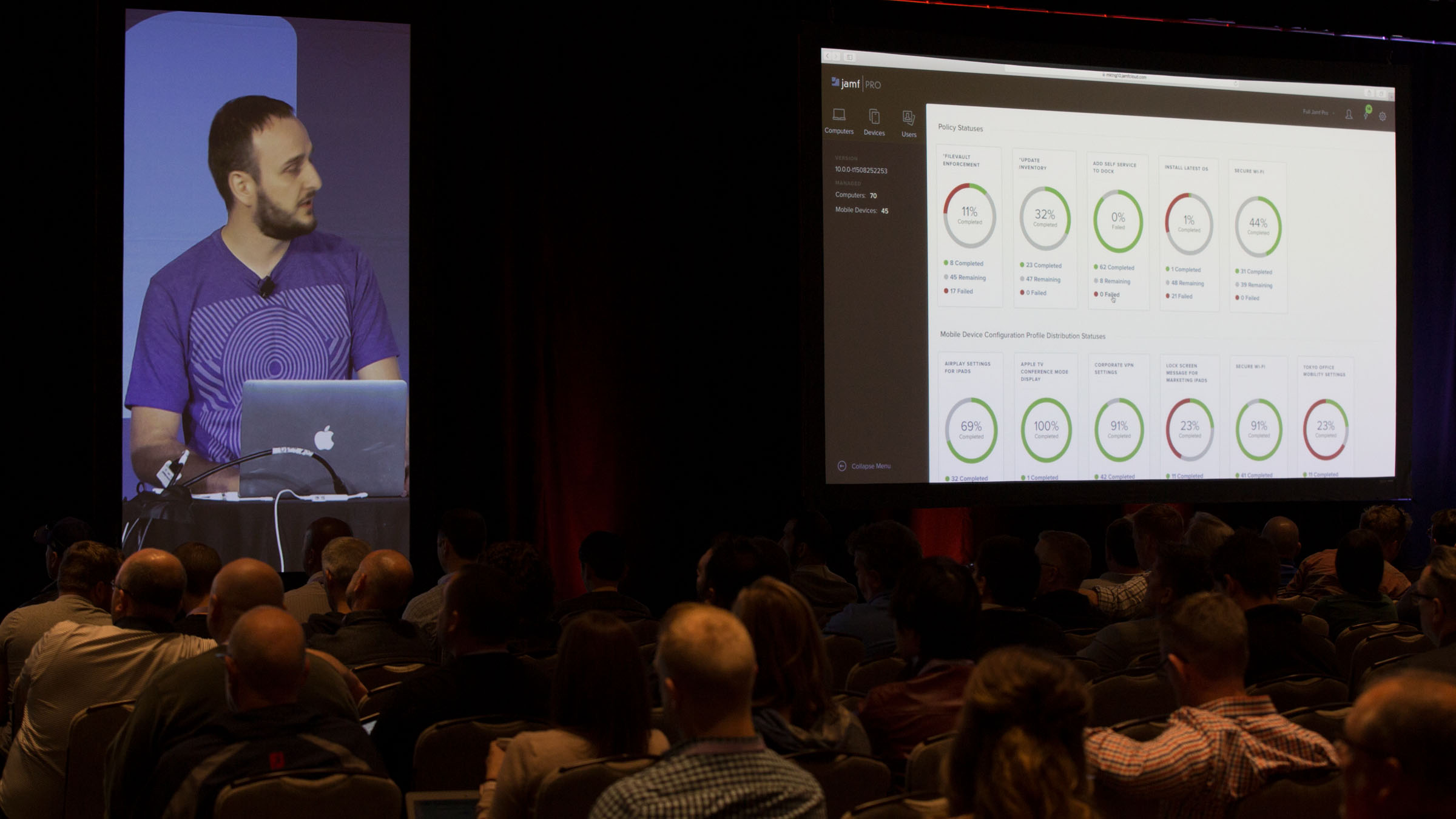
- #Jamf pro 100 install
- #Jamf pro 100 drivers
- #Jamf pro 100 Patch
- #Jamf pro 100 software
- #Jamf pro 100 password
IOS apps exist in a self-contained environment called an App Sandbox. When you finish, answers can be found here. There is one correct answer for each question. Now when it is refresh time for one of my users, I am giving them a Mac unless they have very good reasons why they need a PC.Select the best answer for each multiple choice question. Now, there is nothing that I have set out to do with GPO that I couldn’t do with Jamf. We have known for some time that Mac users are less likely to have help requests than our PC users but this has been offset by the number of times we have to go and touch all of our Macs for something silly that we have been able to do with GPO to manage our PCs.

We are a split staff between Macs and PCs. Now, we could do most of this without Jamf but, being a team of two with 300+ users to support, Jamf has been such a blessing.

#Jamf pro 100 password
#Jamf pro 100 install
#Jamf pro 100 software
Restricting software like MacKeeper, torrenting software and others.
#Jamf pro 100 drivers
Pushing software like copier drivers that previously required us to touch every machine.Near zero-touch deployment (could easily be zero touch but I need to feel useful).Some of the things we are currently doing with Jamf: Jamf has saved me and my help desk tech incredible amounts of time. With all that said, even if I my only option was the hosted solution from Jamf, I would still do it. Maybe things have changed but be sure to ask the question. At the same device count, the hosted solution would cost us $43k over 3 years and $72k over 5 years. At these device counts, the on-prem solution costs us $24k over three years and $30k over 5 years. Jamf currently covers 170 Macs and 80 iOS devices for us. The quote we received on the hosted solution was $67/Mac per year and $38/iOS per year. Having spoken with a number of CITN churches using Jamf and knowing that there had been a cheaper option, I pushed our salesperson and he let me know that the on-prem only solution was ending as of 9/30/17 and that, going forward, Jamf would only be offering the hosted solution.įor reference, we paid approximately $90/Mac initially with $18/Mac per year on-going and $40/iOS initially and $8/iOS per year on-going. There was nothing on the website about any discounts for running on-prem, everything was hosted. When HFBC was first investigating Jamf over the summer last year, we were only offered a hosted Jamf solution.

I don’t know that this is the case anymore. The initial cost hurts, but reoccurring is reasonable. We’re now over 100 macs and jamf has been helpful. As long as you go into the venture knowing you will need to put a lot of effort into the initial startup, you will likely be very satisfied in the long run. They provide great support and a (usually) great product. So the decision really comes down to a time vs money argument.
#Jamf pro 100 Patch
jamf’s patch management is very much lacking in the automation space right now. Where as jamf was built more for predictable machine state. But that’s what Munki was initially built to do. Munki has vastly superior patch management. Munki is a very strong competitor in the OSS arena. The management framework (with it’s Self Service app) has no competition commercial space in my opinion. However, there are many competitors which are beginning to make headway. It’s MDM implementation is the best in the business for the macOS platform. jamf PRO is more of a 2-part framework than a magical cure all-MDM and management framework.

The hope is that we can streamline our deployment and reduce minor support issues (like printing, etc).


 0 kommentar(er)
0 kommentar(er)
